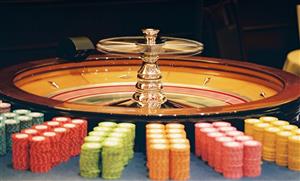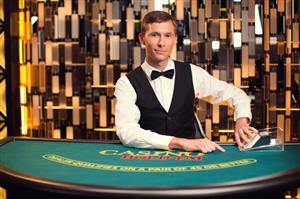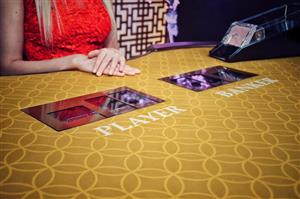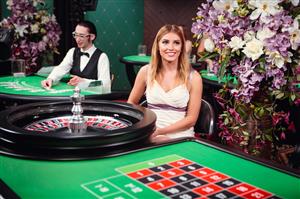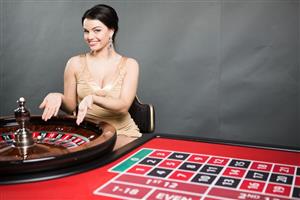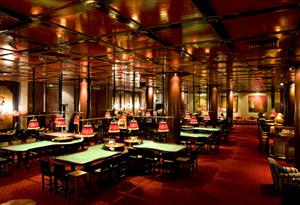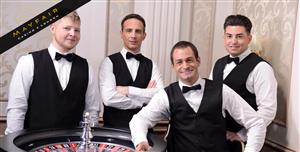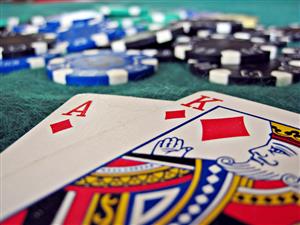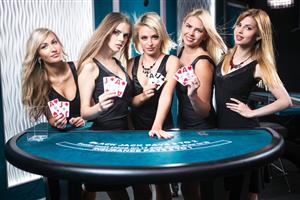Mayfair’s Casino History: How the Gaming Industry Evolved in London’s West End
We explore the evolution of Mayfair's rich casino history
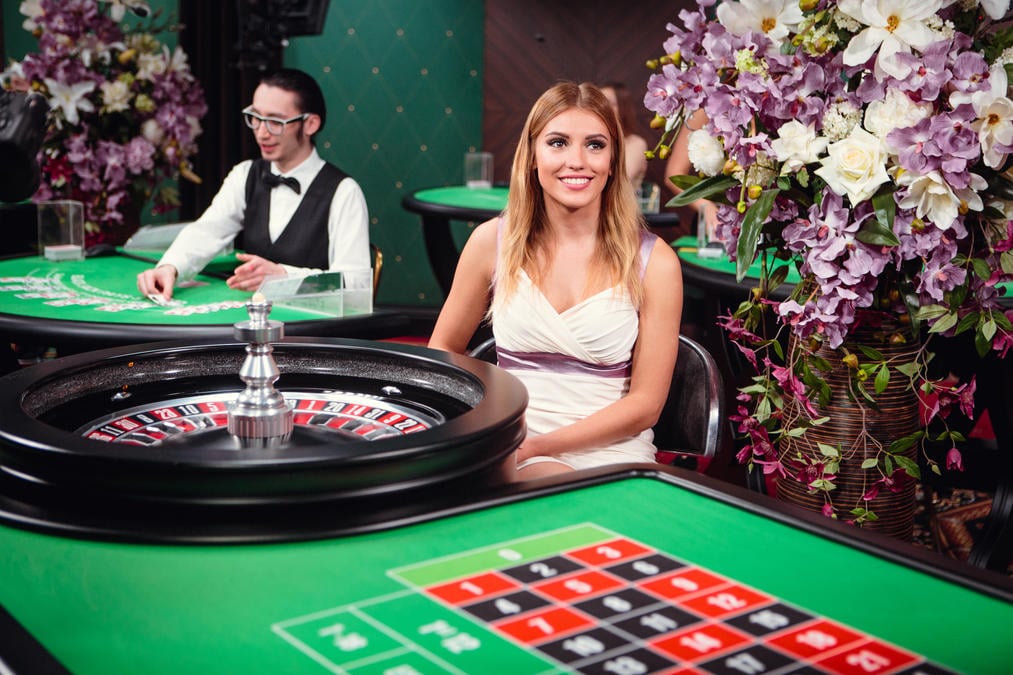
With a total of twenty eight casinos in and around central London and new ones appearing in out-of-town areas, it’s easy to forget these days that the hub of London’s casino scene remains around the exclusive Mayfair district.
Situated directly east of Park Lane this area first makes its mark on the psyche of the average UK citizen when they encounter it as the premium destination on the Monopoly board, but over the years it’s retained its cache and looks unlikely to ever go out of favour thanks to an enviable position immediately adjacent to Hyde Park, the western end of Oxford Street and Buckingham Palace.
Factor in the close proximity of St James’s with its world-class clutch of gentleman’s clubs hailing from a bygone and much-missed era and the appeal of the area becomes immediately clear – but is Mayfair where it all started?
The answer is in fact a resounding ‘No’. Exclusive gambling venues began operating in Mayfair around two hundred years ago, but prior to that the action was situated elsewhere – which is hardly surprising when you consider that gambling can be traced back to over two thousand years ago when the UK capital looked rather different.
Roman beginnings
A quick look at London around the time of the Romans shows that the city walls didn’t extend any further westwards than the area now occupied by St Pauls Cathedral, so the area now designated as Mayfair would have been little more than fields back then. Roman legions, like soldiers throughout the ages, had a predilection for gambling and played a dice and board game called Duodecim Scriptorum (literal translation Twelve Writer).
This game evolved into a similar game named Tabula, which was the forerunner of modern Backgammon. Given the latter’s unimpeachable popularity to this very day some serious credit has to be given to the Romans for coming up with it. Quite how many versions they got through before settling on the game we all know and love will never be truly known, but even the Tabula board is remarkably similar to the Backgammon board of today and clearly needed only a small amount of fine tuning.
So: Next time you watch Monty Python’s Life of Brian and discover what agricultural, mechanical, domestic and political ideas the Romans bestowed upon us, remind yourself that there’s at least one crucial cultural phenomenon that they forgot – and don’t underestimate its importance. Backgammon may not be something you’d expect to see in a West End casino nowadays but it is played for money in private rooms and a high level of proficiency is viewed as a very classy feather in any gamer’s cap.
The key attraction for Roman soldiers and anyone else who played was the idea of a race. A duel to the finishing line is something that enthrals the betting public to this very day and it’s not hard to see the immediate, competitive, primeval thrill generated by such one-on-one contests. It’s what attracts viewers and gamblers to sports like drag racing and pursuit cycling today, and is never about to go out of fashion.
Interestingly, to the Romans gambling was viewed as a metaphor for life, which was probably why it was viewed as entertainment rather than a potential addiction. Quite which aspect of life it was meant to parallel isn’t known, but it’s safe to assume that they were referring to the role that luck plays in all aspects of our lives. If this seems somewhat glib, it’s worth remembering that this was a dynasty that thought nothing of capturing slaves and forcing them to fight lions whilst the great and the good watched them get devoured for their own entertainment. Perhaps if the citizens responsible for putting them there were to face the same fate upon the roll of a die they’d have looked at the situation rather differently, though in all fairness they did turn up in the UK and build roads that we still use today - so they were clearly getting something right.
The Middle Ages
So what came next? Namely the Middle Ages, the demise of the Roman Empire (but not Backgammon, obviously), the Anglo Saxons, Viking attacks and William the Conqueror. That’s a considerable amount of military staff who can’t have been up to their necks in bloodshed 24/7, so what did they do for entertainment? Weirdly enough, more bloodshed, this time jousting – which became so popular among both participants and the wagering public that it had to be banned by Henry II.
The King wasn’t too bothered about his populace descending into a jousting-driven spiral of addictive gambling depravity – all he was worried about was losing large numbers of talented front line military staff in frivolous entertainment tournaments, though we suspect that most of the participants were quite relieved not to have to take part any more as well – we’re not talking about It’s a Knockout, after all.
Moving forward to the Thirteenth Century, soldiers coming back from The Crusades didn’t bring back any souvenirs – they were lucky to return with all four limbs – but they did bring back a dice game called Hazard. This spread around London and then the rest of the British Isles like wildfire, over to France and thence to America where it eventually developed into the Craps game played all over the Western world today.
It’s hard to believe that a game so ingrained in American culture actually began in the Middle East, but a good idea is a good idea no matter where it’s happening, and although many players find Craps a little intimidating there are still some central London casinos that offer it. Whilst it’s unlikely any of the participants will be aware of its origins, they probably will know that it offers the best odds against the house in any casino – and that it’s brilliant fun and generates more excitement than any other casino game.
Going back to the 14th and 15th centuries, however, things took a step backwards for while with coin flipping becoming highly popular. Perhaps the much-derided concept of Dumbing Down was already starting to rear its ugly head; maybe there simply weren’t enough dice to go round, or perhaps people just liked playing a game where the rules couldn’t be misinterpreted.
In all fairness, other types of gambling were also taking hold of London at the same time. Quoits - a type of ring tossing game still played on cruise ships today – was bet on, as was every kind of competitive sport like archery. More significantly, it was around this time that playing cards started to make an appearance.
Poker makes an appearance
Fast forward to the middle of the second millennium and Henry VIII was in power, faced with a serious gambling epidemic. Board games like Queek (similar to draughts) and Fox and Geese (a pursuit game) were wildly popular, but the crack cocaine of gambling in the UK capital circa 1,500 AD was Three Card Brag.
Every schoolboy knows about this game, yet most are probably gleefully unaware of how old it is as they rush off to the back of the field at break to get their regular fix. It’s the forerunner to poker - hence its popularity - and the rules are beguilingly simple, essentially following the betting round structure that’s used today in Texas Hold ‘Em and other popular variants.
The appeal is easy to understand: Betting rounds based on ranking hands are a great way to suck players into a round and force them to quit or commit more, resulting in exceptional fluctuations in fortune which always means more excitement.
This type of game is also not far off the kind of table poker seen in modern casinos today, though these are played against the house and the betting round structure is avoided which makes each game far less risky in isolation.
Being the kind of guy who thought nothing of executing his wives after they upset him, the most notorious of the royal Henrys (arguably with the exception of the present day Harry Wales) had no qualms about banning gambling in his own army, whilst simultaneously permitting it at court. When you’re dealing with a man who presided over 72,000-plus executions, however, it’s probably not a good idea to point out any evidence of hypocrisy, so London society continued to enjoy unfettered access to numerous gambling dens and wagers were even made on whether Anne Boleyn – on trial with her brother for treason and incest – would be acquitted. Odds, thankfully for the bookmakers of the time, were 10 to 1 - and we all know the ultimate outcome.
When Edward VI took over, dice and gambling games were legalised, though the clergy were not permitted to join in the fun and everything stayed fairly constant until the arrival of one Mr Cromwell, who – unsurprisingly – banned all horseracing, cockfighting and gambling dens in London and across the UK.
With the restoration of the Monarchy, however, came a new broom and Charles II even had his own croupier. Such was the new king’s dislike for the hated Cromwell that he dug up his body and put it on trial – and needless to say he was found guilty. Guilty of exactly what is neither here nor there – one thing he certainly didn’t like was people enjoying themselves and even if you fervently believe that legalisation of gambling will lead to endless moral and spiritual decline there’s no escaping the fact that Cromwell was an absolute misery. He banned Christmas and all sports along with gambling, and it’s hard to imagine a life without the former two even if you aren’t the life and soul of every Yuletide gathering you go to or a die-hard football fan.
The monarchy leads the way with a huge resurgence in gambling
Under King Charles Sir Thomas Neale was put in charge of ensuring all gambling dens met with existing legislation and closing down any that were deemed to be improperly run. In other words, he was London’s – and quite possibly the world’s - first gaming regulator. He was deemed to have done such an excellent job that London’s King Street was re-named Neale Street in his honour, as was the delightful Neale’s Yard in today’s Covent Garden.
Charles wasn’t just pro-gambling: He loved it. He had a particular fondness for racing horses at Newmarket in contests that still exist today, re-established horse racing throughout the country and even wrote the rules – and that’s why to this day it’s known as the ‘Sport of Kings’. Needless to say once the king had got behind gambling the rest of London society followed, and what happened behind closed doors at Hampton Court became commonplace all over town.
People now even started to place bets on sports and pub games, making the activity so popular that Charles is often known as the ‘Father of Gambling’ due to his passion.
All interests that generate any level of controversy, though, have a habit of going in and out of fashion, subject to the whims of the political elite of the day – and by the 19th century gambling had inextricably become linked with alcoholism and prostitution. The upper echelons of society still wanted to play but unlike today the gambling dens on offer to Mr or Ms Average offered a very different experience from that on offer to the wealthy and titled - and there was no better example of the top end of the market than the infamous Crockfords.
Crockfords: Still the UK’s most notorious casino
Known for its lavishness and opulence, this club still exists today under Genting’s ownership. William Crockford employed renowned architects Benjamin and Philip Wyatt to construct London’s most extravagant entertainment venue inside leased premises at 50 St James Street. South of Piccadilly this was not technically Mayfair, but in an area as upmarket as Westminster it’s close enough.
Crockfords’ original incarnation primarily had the air of a gentleman’s club – and being right in the heart of clubland that made perfect sense. It could be raucous and somewhat raffish, but such was the social standing of even the most badly-behaved members that it only seemed to enhance the reputation of the place.
Ironically, though, Crockford himself wasn’t one of the gang: The son of a fish merchant, he was extraordinarily good with probability and quickly worked out how to gain an edge at gambling in an era when regulation was less strict and there were loopholes that could be exploited. Crockford quickly made a large amount of cash and then turned the tables, opening his club knowing full well that he’d always have a statistical advantage over his clients.
Crockfords closed in 1845 and reopened exactly 100 years after it was launched. In 1928 the club unlocked its doors again, primarily as a venue to host bridge players - though Chemin de Fer, Roulette and Blackjack followed. It’s now located at 30 Curzon Street, and if you don’t want to attend in person you can gain access via Genting’s online casino.
After Crockfords the West End casino industry’s next shot in the arm was the 1960 Betting and Gaming Act. This was introduced to combat a growing underground betting industry that was avoiding tax and causing serious levels of criminal activity in the capital and throughout the UK.
Instead of being run exclusively by gangs the industry gained respectability and allowed gambling for small sums on games of skill like bridge. From 1961 betting shops started opening and until 1965 local magistrates issued over 16,000 licences.
The Aspinall years
The biggest Mayfair name associated with this era was the infamous Clermont Club. Owner John Aspinall was born in Delhi during the British Raj era and cultivated a stereotypical casino player image in his early years, getting expelled from Rugby School for inattention, and then skipping his final exams at Oxford to attend the Gold Cup at Ascot - forfeiting his degree.
He then opened a bookmaker shop in the late 1950s, prior to the introduction of legal casino gambling, and attended illegal parties between going to the races – where he discovered that Chemin de Fer games were actually permitted and that the house could take a 5% rake, subject to rules on frequency. He then set up private parties of his own and provided the premises were never used more than three times for gambling the law was not broken.
His success with this venture actually led to the 1960 Act and he had to find other avenues to pursue his ambitions, setting up the Clermont Club in Mayfair in 1962. Original members included five dukes, five marquesses, twenty earls and two cabinet ministers. Overheads were higher than before and Aspinall looked for ways to cheat players, leading to the Big Edge scandal. Cards were bent using a roller and then repackaged, giving dealers a clue as to the nature of each card and dramatically improving the house edge.
Aspinall was a charismatic individual, owning the legendary Howletts Zoo, living a dangerous and exuberant life and allegedly enjoying a friendship with Lord Lucan. His name is synonymous with high rolling, carefree, reckless enjoyment, which is no doubt why his nickname – Aspers – is used today for the casino chain of the same name with outlets in London and around the UK.
Nowadays the original club site is still prospering too, with a second club – simply named Aspinalls – run by son Damian Aspinall in Mayfair premises purchased in 1992. In May 2011 that club joined the prestigious Crown Resorts Group and is now called Crown Aspinalls London, still catering for the capital’s elite.
The other big name in London’s West End in the 1960s wasn’t in Mayfair but in nearby Knightsbridge – and it acquired its legendary status thanks to the Kray twins.
Gaming goes upmarket – and so do the Krays
Esmeralda’s Barn was around in the 50’s operating as a conventional nightclub – and owner Stefan de Faye installed gaming tables after 1960. It was initially felt that the Act would drive criminals out of the gambling industry, but instead it merely allowed them to expand their empires illegally. The Krays were rumoured to have been offered the club by infamous landlord Peter Rachman to stop them pursuing him for extortion proceeds, and they used it as a front for various sordid activities as well as a stage for aspiring movie fan Reggie Kray to establish himself as a celebrity.
Casino goers in the West End these days get a far more sanitised experience. Just as large corporations have pushed out the gangsters from Vegas, London’s gaming scene has been taken over by weightier business interests - though the current crop of venues in Mayfair today remain diverse and exclusive. Apart from Crown Aspinall’s and The Clermont there are four other essential places to try:
The Ritz Club is sited in the famous Ritz hotel on Piccadilly, and offers a no-holds barred luxury experience for those that can afford it. They’ll happily bring you to the hotel and drop you off by limo, accommodate, wine and dine you to the highest possible standards and offer you access to their stunning main gaming salon. This is sited in the former ballroom which features a magnificent ceiling under which one of the most elegant rooms in London creates an atmosphere perfect with a contemporary approach to gaming. It’s open to all guests staying at the hotel and you can enjoy American Roulette, Punto Banco, Blackjack and Three Card Poker all day, every day.
If this isn’t exclusive enough for you there are various discreet salles privee as well – with a fully personalised service for that extra-special gaming experience of a lifetime.
Other alternatives are the Palm Beach, Maxims or The Colony Club. These are all owned by Genting along with Crockfords, and offer a variety of plush environments in which you can enjoy Roulette, table poker, Blackjack and Baccarat along with electronic Roulette and slots.
Finally, the wonderful Les Ambassadeurs is not to be missed. It’s got a fantastic view over Hyde Park and one of the salles privee even has its own private dining room. Enough said, really.
With half a dozen high end casinos in an area approximately one square mile in size, Mayfair still seems to have it sewn up at the upper end of the market. Newer casinos like Aspers Stratford and the Hippodrome may have the lion’s share of the market - but to rub shoulders with the A-Listers make sure you keep heading west until you hit Hyde Park Corner or Marble Arch. From there you’re looking at no more than a ten minute walk at the most – though you’ll most likely want to roll up in a taxi at the very least…
Latest News
-
 London vs the World 10 of the World's Most Luxurious Casinos
London vs the World 10 of the World's Most Luxurious Casinos -
 Scandal How a young group of poker players almost conned a casino out of £30,000+
Scandal How a young group of poker players almost conned a casino out of £30,000+ -
 Casino Scandal How Phil Ivey almost walked away with £7.7 million playing Baccarat at Crockfords
Casino Scandal How Phil Ivey almost walked away with £7.7 million playing Baccarat at Crockfords -
 Heritage Mayfair’s Casino History: How the Gaming Industry Evolved in London’s West End
Heritage Mayfair’s Casino History: How the Gaming Industry Evolved in London’s West End -
 Gambling history A brief history of gambling
Gambling history A brief history of gambling -
 Top 10 Casinos London’s Top Ten Casinos
Top 10 Casinos London’s Top Ten Casinos -
 Betting&Gaming The Betting and Gaming Act 1960
Betting&Gaming The Betting and Gaming Act 1960 -
 Casino History Crockfords Casino: History of London's Most Famous Casino
Casino History Crockfords Casino: History of London's Most Famous Casino -
 The Online Threat The Online Threat: How The West End Continues To Thrive
The Online Threat The Online Threat: How The West End Continues To Thrive


